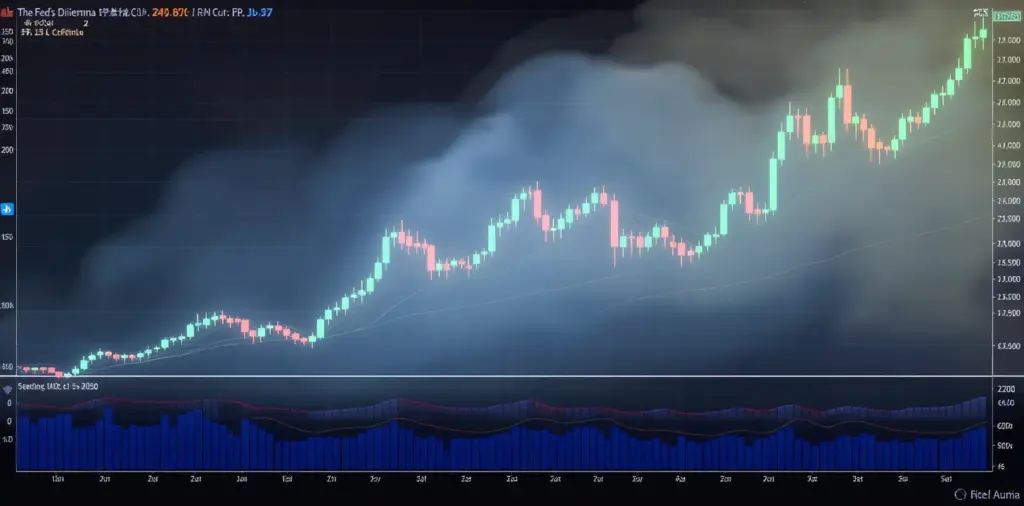When Markets Anticipate the Fed — Is That a Trap?

Opening frame: the coastline illusion
Financial markets currently act as though they see land ahead — the Fed will cut, the economy softens, rates fall. But anticipating land when steering through fog can mislead you into reefs. The FOMC minutes show the fog is thicker than implied.
1. The illusion of certainty
Markets now assign between ~90-95% probability to a 25 bps cut in late October. That certainty is a dangerous position: it implies a one-dimensional bet. If the Fed’s language surprises (less dovish, more cautious), a snapback is baked into the risk.
The minutes, for their part, emphasize internal vigilance: inflation remains a calibrated threat, and some participants still hesitate. The “dovish tilt” exists, but it is contested.
2. The fine line between guidance and hawkishness
Fed communication always walks a tightrope: too dovish, and you spook inflation expectations; too hawkish, and you choke a nascent slowdown. In 2025, that equilibrium is even more precarious because:
- The economy shows cracks (weaker job growth, consumer softness)
- Inflation is sticky above 2%
- Political and fiscal risks loom
- The government shutdown blurs data visibility
In that regime, the Fed’s language becomes a policy weapon. A phrase like “further adjustments will depend on incoming data” carries outsized weight.
3. Strategic market posture: what to lean into (and what to hedge)
a) Barbell positioning
You can lean toward growth / quality equities (tech, AI, semiconductors) that benefit most from rate cuts, but hedge with safe havens (Treasuries, gold) in case the signal is weaker than expected.
b) Dispersion bets / volatility picks
Volatility tends to cluster around Fed events. Consider dispersion strategies (longing under-bought names) or options that benefit from surprise twists.
c) Cross-asset vigilance
Watch credit spreads. If spreads widen (especially in corporate or high-yield credit), it signals stress beneath equity strength.
d) International / EM hedges
With dollar potentially weakening, emerging markets may benefit—but they also carry currency risk and sensitivity to U.S. financial conditions.
4. The lurking trap: the “Fed put” illusion
Investors often assume the Fed will always step in — the so-called “Fed put.” But in 2025, that put has a chain rather than a floor. If inflation surprises, or fiscal pressures mount, the Fed may find its put is much more limited than assumed.
Markets may be pricing from a place of hubris: believing cuts are guaranteed. The FOMC minutes remind us: the institution still debates.
5. Final reflections
We are not in a regime where the Fed is passively following markets; the reverse is true. Markets are projecting trajectories, but the Fed will push back if trajectory misaligns with its dual mandate. To be a successful navigator now, one must factor uncertainty, tolerate surprises, and maintain humility.
Markets that bet too heavily on dovishness may be setting themselves up for reversal. The edge lies not in conviction but in options — optionality, asymmetry, readiness. If the Fed affirms, the upside is clearer. If it balks, the downside is sharper.
